Norse mythology, a rich tapestry of tales and legends from ancient Scandinavia, offers a window into the beliefs and values of the Viking Age. Central to these stories is Thor, the god of thunder, known for his immense strength and heroic deeds. Revered in Norse culture, Thor is not just a deity of storms but a protector of humanity, wielding his mighty hammer, Mjölnir. This article aims to delve deep into Thor’s mythological roots, exploring his significance in Norse lore and his enduring impact on modern culture. By examining his stories, symbolism, and transformations through time, we will uncover the multifaceted nature of this legendary figure, revealing his relevance in both ancient times and contemporary interpretations.
| Heading | Thor Information |
|---|---|
| Origin | Norse Mythology |
| Deity Type | God of Thunder and Lightning |
| Appearance | Typically depicted as a powerful, red-bearded god wielding the hammer Mjölnir |
| Role | Protector of both gods and humans, associated with thunderstorms and fertility |
| Hammer | Known for his magical hammer, Mjölnir, which he used to defend against foes |
| Family | Son of Odin and the Earth goddess Fjörgyn |
| Cultural Impact | A central figure in Norse mythology and one of the most well-known Norse gods |
| Depictions | Featured in many Norse myths and sagas, as well as modern adaptations |
1. Historical Context and Origins
The Roots of Norse Mythology
Norse mythology, an integral part of ancient Scandinavian culture, emerged from the shared myths and legends of the Norse people. These stories, passed down orally through generations, were later compiled in texts like the Poetic Edda and the Prose Edda in the early medieval period. This rich mythological framework served not only as entertainment but also as a reflection of the values, beliefs, and understanding of the world among the Norse.
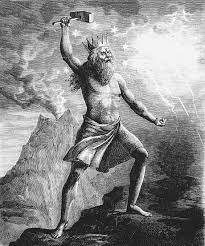
Crafting Thor’s Mythical Identity
Thor, one of the most prominent gods in Norse mythology, is a character steeped in legend and lore. His conception in these myths paints him as a formidable god of thunder, strength, and protection. His character is consistently portrayed with defining attributes, such as his fearsome hammer, Mjölnir, and his battles against giants, showcasing his role as a defender of both gods and humans. The texts reveal a complex character, embodying both the fearsome and protective aspects of nature.
Thor in Viking Society
In the Viking Age, Thor held a significant place in the daily lives and cultural practices of the Scandinavian people. He was not only a mythological figure but also a symbol of strength, courage, and resilience in a harsh and challenging world. His worship was reflected in various aspects of Viking society, from rituals and sacrifices for good harvests and protection to his depiction in art and runestones. Thor’s hammer became a widely recognized symbol, often worn as an amulet for protection. His role in society underscores the deep connection between Norse mythology and the everyday life of the Vikings, illustrating how these myths were not mere stories but a vital part of their worldview and identity.
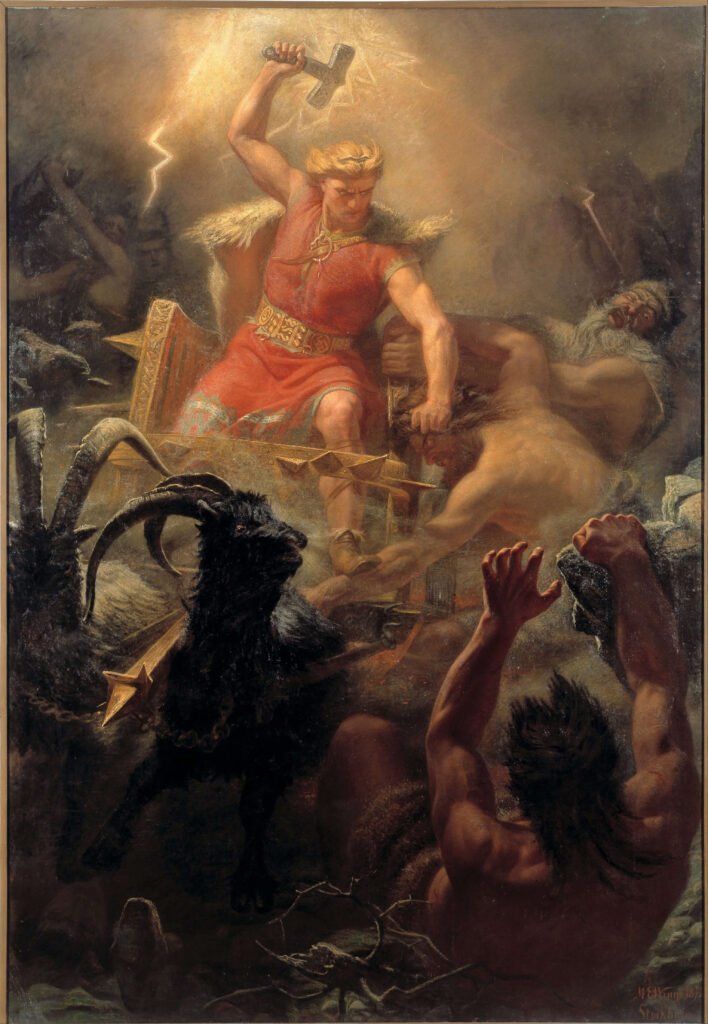
2. Thor’s Mythological Profile
Attributes of the Thunder God
Thor, in Norse mythology, is distinguished by several key attributes that define his character and powers. His most iconic attribute is Mjölnir, the hammer, known for its destructive and protective capabilities and its symbolic representation of lightning and thunder. This hammer, crafted by dwarves, embodies Thor’s role as the god of thunder and his immense physical strength. Thor is also characterized by his mighty chariot, which he drives across the sky, creating thunder. His connection to storms and weather phenomena further cements his status as a powerful and formidable deity in Norse lore.
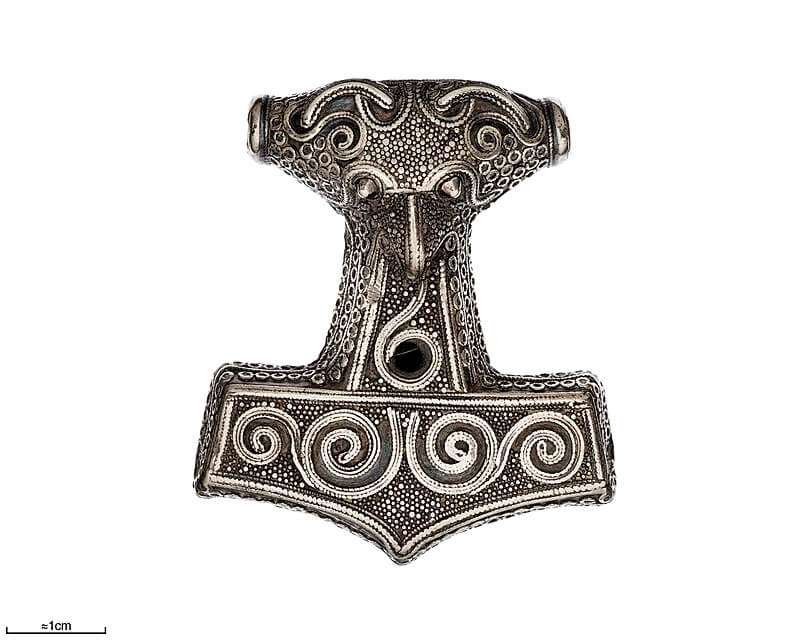
Thor’s Legendary Adventures
The myths of Thor are filled with epic battles and adventures, often portraying his confrontations with giants, the traditional adversaries of the gods. One of the most notable tales is his journey to the land of the giants, where he attempts to drink an entire ocean and lift the giant serpent Jörmungandr, showcasing his extraordinary strength and bravery. Another significant tale involves the theft of his hammer and his quest to retrieve it, demonstrating not only his physical power but also his determination and resourcefulness. These stories highlight Thor’s role as a protector, constantly battling forces that threaten the order of the cosmos and the well-being of gods and humans alike.
Thor’s Divine Kinship
In the intricate family tree of Norse gods, Thor holds a prominent position. He is the son of Odin, the chief of the gods, and Jord, the personification of the Earth. This lineage establishes Thor as a god of significant power and importance. His marriage to Sif, a goddess associated with fertility, further connects him to the themes of protection and prosperity. Additionally, Thor’s children, including his sons Modi and Magni, who inherit his hammer after Ragnarok, and his daughter Thrud, often appear in various myths, emphasizing his role as a familial figure. Thor’s relationships with other gods and his family portray a deity who is deeply intertwined in the cosmic and social fabric of Norse mythology.
3. Symbolism and Cultural Significance
Symbolic Interpretations of Thor
Thor’s character in Norse mythology is rich with symbolic meanings that extend beyond his physical attributes. Primarily, he symbolizes strength and protection, evident in his role as a defender against chaos and his control over thunder and lightning. This symbolism resonates with the Norse understanding of a cosmos constantly in flux and the need for divine protection against external chaos. Additionally, Thor is associated with fertility, a less obvious but significant aspect linked to his control over rain and its impact on agriculture. This connection highlights the multifaceted nature of Thor, embodying both the destructive and nurturing forces of nature.
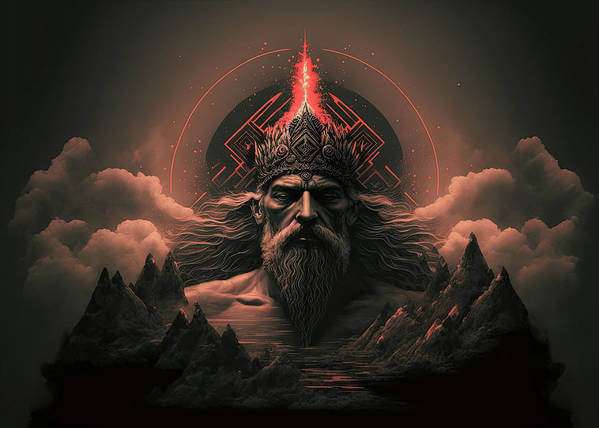
Thor in Rituals and Viking Art
In Viking society, Thor played a central role in religious practices and cultural expressions. Rituals often invoked his name for protection, particularly in agrarian contexts, reflecting his association with fertility and growth. Thor’s hammer, Mjölnir, was a common motif in Viking art, symbolizing divine power and protection. It was frequently used in jewelry, amulets, and carvings, serving as a talisman against harm and a symbol of allegiance to the deity. The widespread use of Thor’s imagery in art and artifacts underscores his integral role in the daily life and spiritual practices of the Norse people.
Thor’s Influence on Scandinavian Identity
The myths of Thor have profoundly impacted Scandinavian cultural identity, both in ancient times and in contemporary society. His tales, embodying the values of bravery, strength, and resilience, have been sources of inspiration and national pride. In modern times, Thor continues to be a significant figure in Scandinavian culture, where his legacy is celebrated in festivals, literature, and popular media. This enduring appeal speaks to the deep-rooted connection between the Norse gods and the cultural and historical identity of the Scandinavian people, with Thor standing as a timeless symbol of their heritage and values.
4. Thor in Comparative Mythology
Thor and Zeus: The Thunder Gods
A compelling comparison can be drawn between Thor and Zeus, the Greek god of the sky and thunder. Both deities are associated with thunder, lightning, and the maintenance of order. However, their roles and portrayals differ significantly. Zeus, as the king of the gods, is often depicted as a ruler and a figure of authority, whereas Thor, despite his strength and noble lineage, is more of a protector and a warrior. Zeus wields lightning bolts, while Thor’s power is concentrated in his hammer, Mjölnir. This contrast highlights differing cultural values: Greek mythology often emphasizes wisdom and authority, while Norse tales valorize physical strength and bravery.
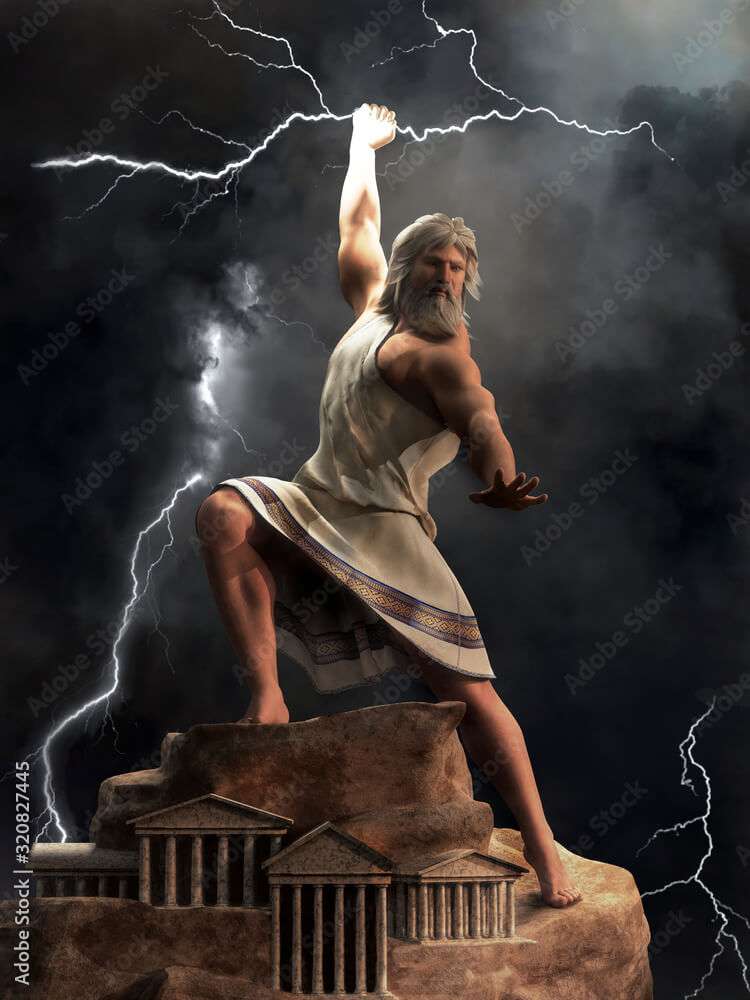
Thor and Indra: Divine Warriors
Thor’s parallels with Indra, the Vedic god of thunder and war in Hindu mythology, are also striking. Both are warrior gods known for their heroic battles against forces of chaos, such as giants in Norse mythology and the demon Vritra in Vedic stories. However, Indra is also seen as a king and a leader of the gods, a role that Thor does not typically assume in Norse myths. Indra’s portrayal is more complex, encompassing a wider range of attributes, from martial prowess to the oversight of rain and rivers, akin to Thor’s connection with weather phenomena. This comparison underscores the universality of certain themes in mythology, such as the battle between order and chaos, while also reflecting distinct cultural nuances.
Common Themes and Cultural Differences
In comparing Thor to figures like Zeus and Indra, several common themes emerge: the association with thunder and weather, the role as protectors, and their status as mighty warriors. However, the portrayal of these gods varies according to cultural contexts. Thor’s depiction as a more accessible and less authoritative figure reflects the Norse cultural emphasis on the virtues of strength and endurance, as opposed to the divine rulership and moral authority often attributed to Zeus and Indra. These comparisons not only highlight the similarities and differences across mythologies but also offer insights into the values and worldviews of the cultures from which these myths originated.
5. Modern Interpretations and Legacy
Thor in Contemporary Media
Thor has transcended his mythological roots to become a prominent figure in modern media, particularly in literature, movies, and comics. His character has been adapted by various authors and filmmakers, most notably in the Marvel Comics universe and its cinematic adaptations. In these modern renditions, Thor is often portrayed as a superhero, blending his mythological attributes with contemporary characteristics of heroism and moral complexity. These adaptations have significantly increased his visibility and popularity, introducing the character to a global audience unfamiliar with Norse mythology.

Aligning and Deviating from Myth
Modern interpretations of Thor often show a mix of alignment with and deviation from the original Norse myths. While the essence of his character — as a powerful, thunder-wielding god — remains consistent, many contemporary portrayals add elements that are not found in traditional Norse tales. For instance, the Marvel depiction of Thor includes narratives and relationships that are not present in ancient myths, reflecting the creative liberties taken to fit the character into modern storytelling formats. These deviations, while sometimes far from the original myths, help keep the character relevant and relatable to contemporary audiences.
Cultural Impact and Significance
Thor’s presence in popular culture has had a significant impact, both in renewing interest in Norse mythology and in shaping modern perceptions of mythological narratives. His adaptation into various media forms demonstrates the enduring appeal of mythological figures and their stories. This phenomenon also highlights the flexibility of myths to be reinterpreted across different eras, catering to the evolving tastes and values of new generations. Thor’s legacy in popular culture serves as a testament to the timeless nature of these ancient stories and their ability to continue inspiring and entertaining people across the world.
6. Conclusion
Thor, the Norse god of thunder, emerges from the pages of ancient mythology as a multifaceted figure of immense strength, a protector against chaos, and a symbol of fertility and resilience. His attributes, legendary tales, and family relationships paint a vivid picture of a deity deeply embedded in the cultural and spiritual life of the Vikings. Comparative mythology reveals common threads and distinct nuances in his portrayal alongside other thunder gods like Zeus and Indra, underscoring universal themes across cultures. In modern times, Thor’s adaptation into popular media has not only revitalized interest in Norse myths but also reshaped his image, blending ancient lore with contemporary values. This evolution of his character from myth to modern icon highlights the enduring relevance and adaptability of these ancient stories, affirming Thor’s lasting legacy in our collective imagination and cultural heritage.
